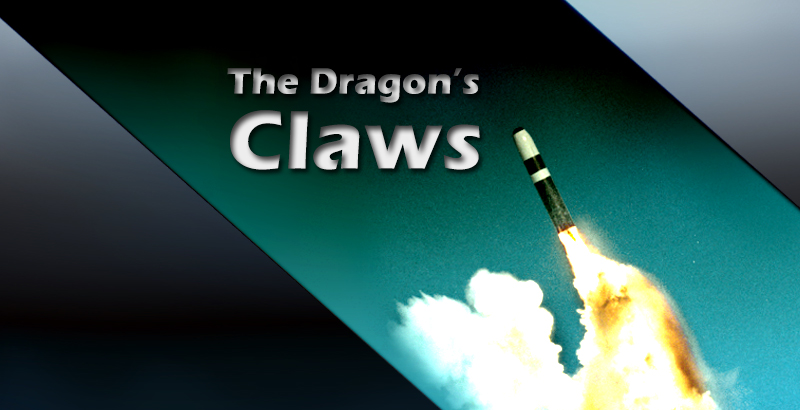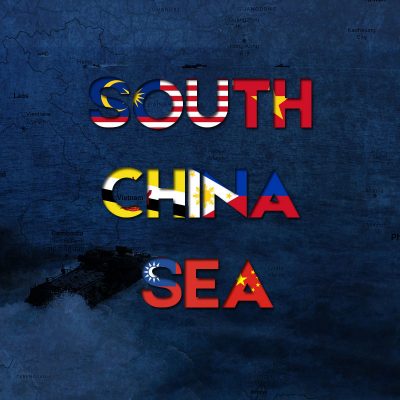
Written by Igor Pejic exclusively for SouthFront: Analysis & Intelligence. Igor Pejic graduated Political Science Foreign Affairs Department at the Faculty of Political Science and now he is a postgraduate student on the MA Terrorism, Security and Organised Crime at the University of Belgrade, Serbia.
Ballistic and cruise missiles have always been a good alternative to a large and costly Air Force. These missiles can be effectively used against adversaries with formidable air defense systems, where an attack with manned aircraft would be impractical and costly. Missiles also have an advantage of less maintenance, training, logistics etc., and all of these weapons could be armed with nuclear, biological, conventional or chemical warheads. During the 20th century there has been a massive proliferation of these weapons. Ballistic missiles had been used in Iran-Iraq war, Afghan civil war, Persian Gulf conflicts, the Russian military actions in Chechnya and Georgia and of course they are being used in the Syrian conflict.
China’s growing GDP during 2012-2014 resulted in an increased spending in the military department (2015 military budget estimated 140 billion dollars). This economic/military policy could have significant impact in the future since relations between China and the US, over the disputed islands in the South China Sea, are heating up. Much of this military spending should be directed to further development of missile programs, navigation and armament. Many countries including China view their missile capabilities as a symbol of power and pride; also these missile capabilities represent an asymmetric threat to US airpower. China has one of the most active and diverse ballistic missile programs in the world. Constant developing and testing, formation of additional missile units and continuously upgrading the quality of their missiles makes China a serious competitor for a leading geostrategic power not only in eastern Asia, but in the world as well. Expending their missile arsenal as well as modernizing it, China can easily prevent adversarial military forces access to local conflicts.

SRBM have an effective range of ~1,000 km and are being developed by several countries across the globe. China’s SRBM systems have been upgraded with solid-propellant fuel and are currently being deployed in the vicinity of Taiwan.
SRBM:
Missile: CSS-11 • Propellant: Solid • Deployment Mode: Road-mobile • Range: 800+ km • Payload: 500-1,000 kg.
Missile: CSS-6 • Propellant: Solid • Deployment Mode: Road-mobile • Range: MOD-1 600km MOD-2 850+ km • Payload: 500kg
Missile: CSS-7 • Propellant: Solid • Deployment Mode: Road-mobile • Range: MOD-1 300km MOD-2 600km • Payload: 800kg
Missile: CSS-8 • Propellant: Solid/Liquid • Deployment Mode: Road-mobile • Range: 150km • Payload: 250kg
Missile: CSS-15 • Propellant: Solid • Deployment Mode: Road-mobile • Range: 280km • Payload: 400kg

MRBM are currently being developed by China as well as other countries. Modernizing its missile arsenal, especially the MRBM sector, China continues to maintain its regional nuclear deterrence. With these ballistic missiles China is able to counter any deployment or operations made by an adversary’s forces within a defined space.
MRBM:
Missile: CSS-2 • Number of Stages: 1 • Propellant: Liquid • Deployment Mode: Transportable • Range: 3,000km • Payload: ~2,000kg
Missile: CSS-5 • Number of Stages: 2 • Propellant: Solid • Deployment Mode: Road-mobile • Range: 1,750+km • Payload: 600kg
Note that the CSS-5 missile has five different modes which differ physically (different nose sections) and have different technical specifications such as better accuracy, terminal guidance systems and can be equipped with EMP warheads. One of the modes is designed for naval based targets.

ICBM are the final tier of ballistic missiles in terms of power, range and explosive yield. Russia and the US are still leading in this category, but China is not too far behind. Heavy modernization of China’s strategic force includes more survivable road-mobile delivery systems and increased quality of the warheads. Unlike Russia and the US, China is not bound by the New Strategic Arms Reduction Treaty, which limits the US and Russia to no more than 1,550 warheads each.
ICBM:
Missile: CSS-3 • Number of Stages: 2 • Propellant: Liquid • Deployment Mode: Transportable • Range: 5,500+km • Payload: 2,200kg
Missile: CSS-4 • Number of Stages: 2 • Propellant: Liquid • Deployment Mode: Silo • Range: 12,000+km • Payload: ~3,900kg
Missile: CSS-10 • Number of Stages: 3 • Propellant: Solid • Deployment Mode: Road-mobile • Range: MOD-1 7,000+km MOD-2 11,000+km • Payload: 2,500kg

SSBN are widely used in Russia, which maintains the highest number of active SSBN’s. China is also developing their submarine missile program, which may prove to be a very effective deterrent force in light of the complicated situation in the South China Sea.
SSBN:
Missile: CSS-NX-3/JL-1 • Number of Stages: 2 • Propellant: Solid • Submarine Class: XIA • Range: 1,700+km • Payload: 200-300 KT
Missile: CSS-NX-14/JL-2 • Number of Stages: 3 • Propellant: Solid • Submarine Class: JIN • Range: 7,000+km • Payload: 3 or 4 MIRV at 90KT or single 200-1000 KT

LACM are unmanned, armed aerial vehicles designed to attack fixed or mobile ground based targets. These missiles are highly accurate and can be placed within a few feet of the target. The most advanced LACMs can be effectively used against small targets armed with conventional warheads. Cruise missiles can stay below enemy radars or even use some terrain features in order to avoid detection. Most air defense systems can have major difficulties defending against LACMs. The initial success of the US Tomahawk cruise missile has heightened interests for these weapons in many countries. One of the first LACM’s produced by the Chinese military made its public debut in a 2009 military parade.
LACM:
Missile: YJ-63 • Launch Mode: Air • Warhead Type: Conventional ~500kg • Range: ~200km
Missile: DH-10 • Launch Mode: Surface • Warhead Type: Conventional or Nuclear 300-400kg • Range: ~600km

In the next decade we can expect a sharp increase of ballistic, as well as cruise missiles, not only in China but in the other countries who aspire to become regional powers like India, Iran and Pakistan etc. These weapons can easily be produced and bought from other nations’ manufacturers who are willing to sell them. The quality of the delivery systems is also being improved; the systems are becoming more mobile, survivable and reliable. Lastly and probably the most important thing for many countries with a ballistic missile arsenal, is the fact that all of the missiles can be armed with weapons of mass destruction. Although this represents a solid deterrent force and secures regional objectives, in the case of a major conflict using these weapons the result would have dire consequences for the whole of mankind.





How many countries make missiles with ramjet or air augmented rocket combustion? How any make EMP weapons?
basically any country with nuclear capabilities can reproduce an EMP weapon
Russia has non nuclear EMP warhead very small light looks less than 20 kilograms. US has large nonnuclear emp 1000 pound .
Yes but USA makes non nuclear emp bomb used on Baghdad in 2003 .Russia makes non nuclear EMP weapon also that is less than 20 kilograms.
THE crumbling OF THE ZIO- OWNED AND STARNGLED empire of the untied snakes pit of aipac of liars , also know as usa..